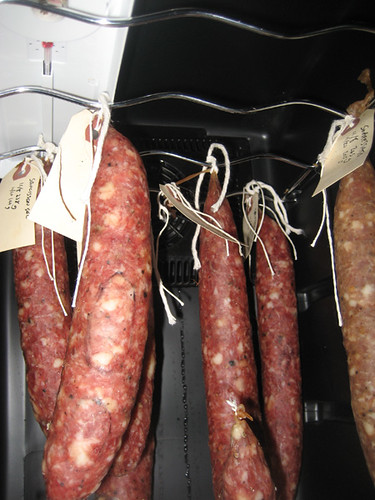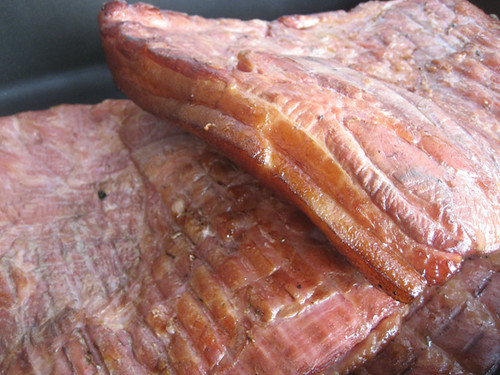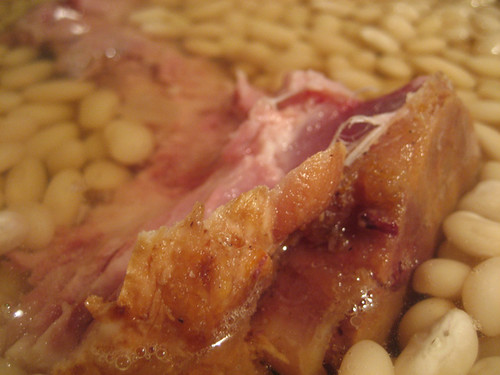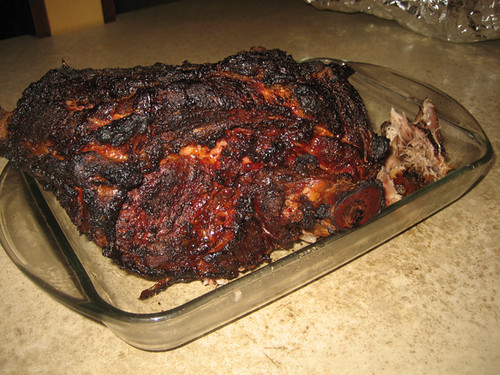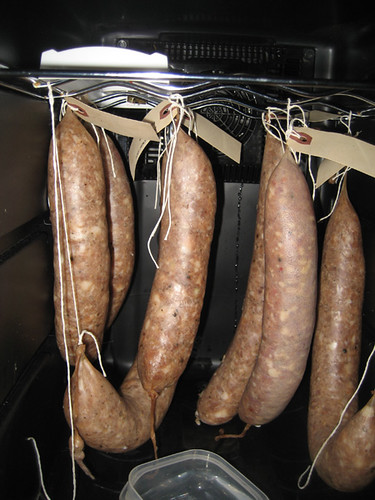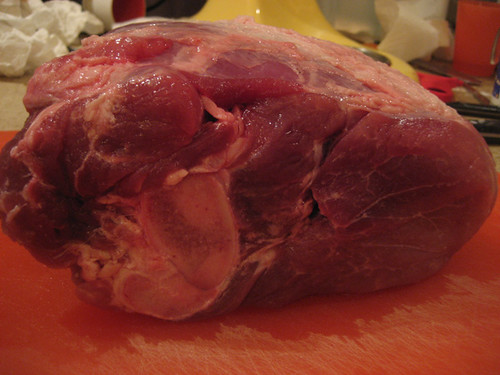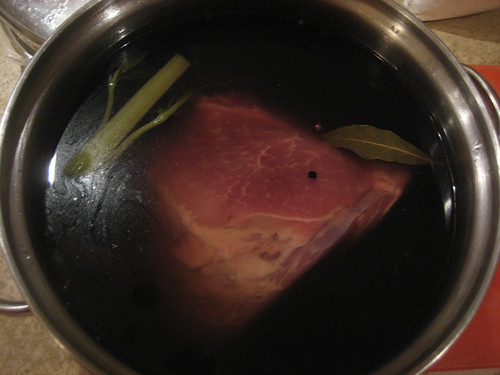It may seem wrong to review books you haven’t read all of, but I suspect it’s often the case with food books, whose formats lend themselves to constant nibbling more than cover-to-cover devouring. This is the first of two reviews of books I’ve been nibbling at, haven’t finished, but feel capable of judging now and enjoying for some time to come. The second, Mark Kurlansky’s The Food of a Younger Land, will follow in a couple of days.
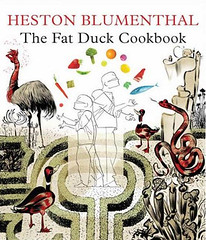
Milk at least has cheese as its bid for immortality, but chefs don’t even have that— meals are made to be made to disappear. Our more conceptual chefs clearly find this frustrating, hence the arrival of the commemorative, menu-as-book-as-art-object volume carefully cataloguing the dishes and bites produced by such conceptual artists in the medium of food as Ferran Adria, Grant Achatz and Heston Blumenthal, arguably the most conceptual of them all. Blumenthal’s The Fat Duck Cookbook originally came out as a slipcased $250 volume, more expensive than the iPod hidden in a seashell to play sounds of the sea in one of his more famous courses, and has now been reproduced as a $50 objet d’art that’s an absolute bargain by comparison, so lavish and complete that the meal itself must seem like a mere appendix next to it. (Careful about using a word like “appendix” next to someone like Blumenthal, by the way, it could go anywhere from there.)
There are really five books here, and whether you will enjoy this or not depends on how many of them can truly interest you. Two of them are really of technical interest only to chefs hoping to follow in Blumenthal’s footsteps: that’s the actual recipes for his dishes, and the extended glossary on his weird-science ingredients and methods. Given that dishes such as “snail porridge” and “sardine on toast sorbet” sound like parodies of modern cuisine gone mad, the actual audience for home cooking of such things has to be minuscule.
In a tactical error, as far as I’m concerned, the book actually begins with a memoir by Blumenthal (who may have discovered many marvelous things, but the chapter break is not among them) about the opening, management and steady success of The Fat Duck. It seems to be designed to convince us that a man who thinks “Hmm, what about snails with porridge” is just a regular restaurateur, which strikes me as the wrong tack to take, normalizing the strangeness of his cuisine rather than embracing it with gleeful, Peter Lorre-esque abandon. The problem with this is, minus Surrealism Luis Buñuel’s story is no different from any other movie director’s, and minus the molecular gastronomical weirdness this becomes just the story of a guy running a small business, not that different from any other restaurateur— or plumber or video store owner.

That leaves the last two books, easily the most fascinating parts and the ones that justify the $50 price tag for the non-mad-science-chef. One is what comes before each recipe, a description of the thought process by which Blumenthal thought up each of his coups de foudre, each of his happenings on the theatre of the plate. The madness and brilliance that the memoir lost in a blizzard of kitchen renovations and mounting bills finally comes to life, as he recounts how childhood taste memories and some odd bit of food science came together again and again in a moment of inspiration and a long process of refining execution at the far edge of food science. Here is his Duck pressed between the covers of a book; here is the master class spent trying to keep up with a brilliant, unpredictable teacher who the memoir tried to hide in the clothes of an earnest manager.
The other is the book that runs all the way through the others— the book of art inspired by his cooking, including dazzling foodpornogasmic centerfold displays of his exquisitely plated dishes, spread wide and glistening for all to lust over, and (liveliest of all) drawings and collages by Dave McKean, an English caricaturist definitely in the blotchety line of Ronald Searle, Gerald Scarfe, and Ralph Steadman. These drawings sustain the memoir during its more pedestrian moments, and the photos convey a sensuality about his food that the focus on science and juvenile memory in the text has somewhat obscured.
Which raises a point about these avant-garde chefs. For all his free-range braininess, Blumenthal, with his emphasis on turning childhood experiences into lightning flashes of taste memory, is still working with a careful and unthreatening conceptual palette, rooted in childlike pleasures and delights— the ocean, the forest, primary colors, a magician’s switcheroo of expectations. Our conceptual chefs will not rank with the other artists until they can find a way to bring the whole of human experience into their work— where are the dishes that evoke the alienation of modernity or the existential terror of existence? Where is the take on Spanish food as powerful as Picasso’s Guernica, where is the play on banh mi that smells like napalm in the morning? You can question whether diners would be willing to pay for that— but this has been a whole book devoted to dishes no sane businessperson would think diners would want to pay for, and now the restaurant they come from is booked months in advance. If there is to be a Fat Duck Vol. 2 that doesn’t merely repeat Disneylike tricks of wonder, these are the dark places Blumenthal, and all our conceptual chefs, must go next.
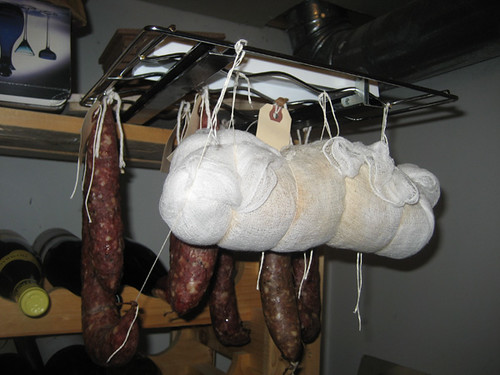


 Posted in
Posted in 


